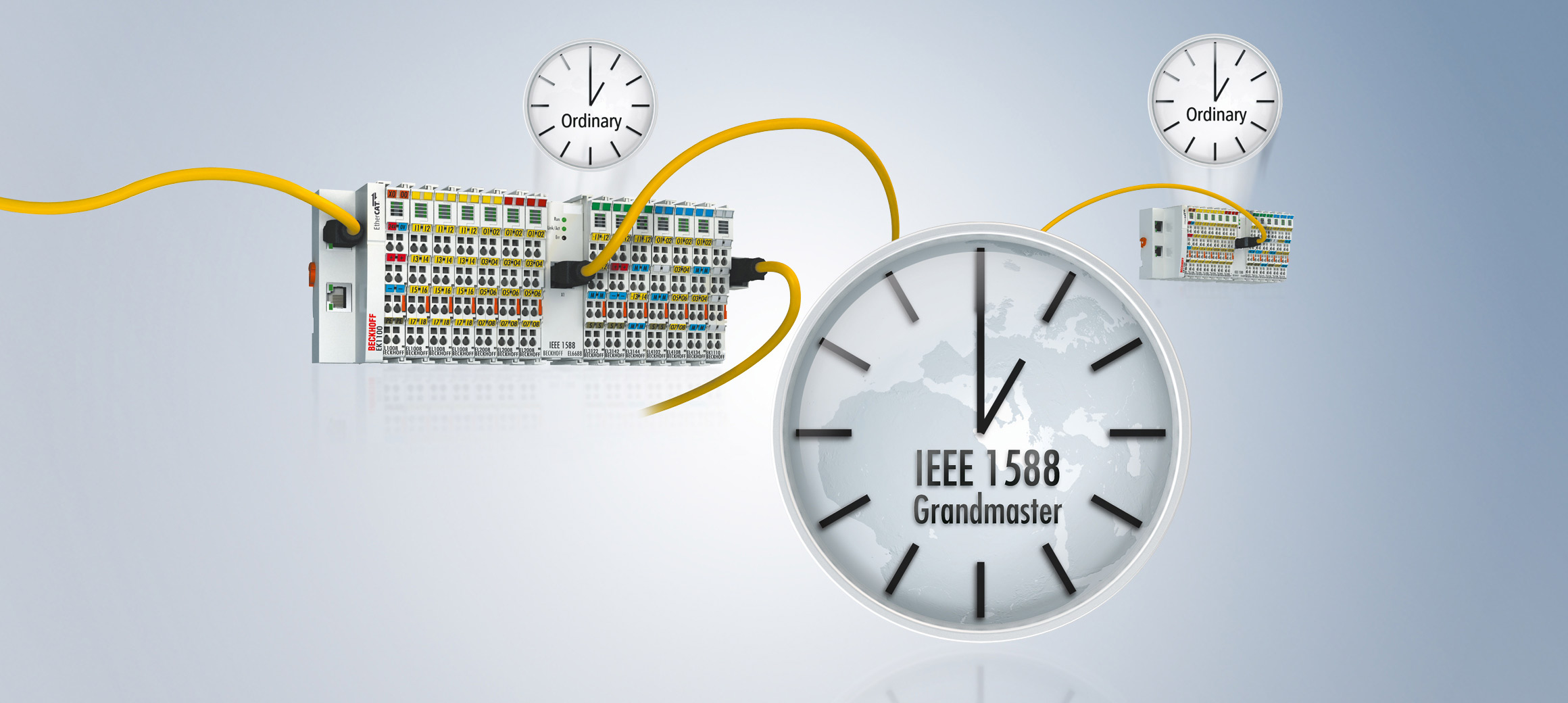

A significant turning point for the I/O level of TwinCAT was the development and introduction of EtherCAT in 2003. TwinCAT and EtherCAT not only share a common naming methodology, but also complement each other to form a very powerful control system with powerful features that will remain state-of-the-art well into the future.
Right from the beginning, the abstraction of the I/O level in TwinCAT has enabled the integration of different fieldbus systems. In addition to Lightbus, the first fieldbus technology developed by Beckhoff, TwinCAT already supported the fieldbuses relevant in automation technology as well as the typical PC interfaces such as the serial interface. The connection to different systems was realized via special plug-in cards in the Industrial PC, which supported the respective fieldbus protocols and established the corresponding physical connection. To achieve the best possible real-time properties, simpler plug-in cards without complex internal processing were preferred, so the actual protocol processing could take place in TwinCAT drivers and the TwinCAT real-time system. However, the quality of the real-time connection differed significantly, depending on the fieldbus and especially between different fieldbuses. In addition, the various plug-in cards inevitably led to large IPC housings with corresponding slots.
All this has been factored into the development of EtherCAT. The IPC should do without additional plug-in cards and use a powerful native interface – standard Ethernet. All EtherCAT devices should be synchronized and have the same time base – the distributed clocks. However, previously known fieldbus systems are also very well integrated via gateway devices, as they automatically run synchronously and are connected via powerful process data and demand data channels. EtherCAT replaces the previously required PCI slots and enables significantly more compact IPC form factors. From the TwinCAT point of view, many special drivers can be dispensed with since the gateways are part of the standard EtherCAT I/O system. The best performance is naturally achieved by I/O devices that are natively integrated as EtherCAT slaves, since they can do without the implementation in the gateway.
The high synchronism and common time base of all EtherCAT devices also enables completely new properties in TwinCAT. For example, in order to accurately capture an axis position at a specific event, the input signal of the event had to be connected directly to the drive amplifier beforehand, since only there was it possible to accurately calculate the corresponding position. With EtherCAT and the distributed clocks, any inputs and outputs can now be used to calculate axis positions in such a way that the controlled machines can be operated quickly and much more precisely. TwinCAT provides special computation functions for this purpose, so that PLC conversions from axis positions to time and vice versa can be performed for the past, the present and the near future.